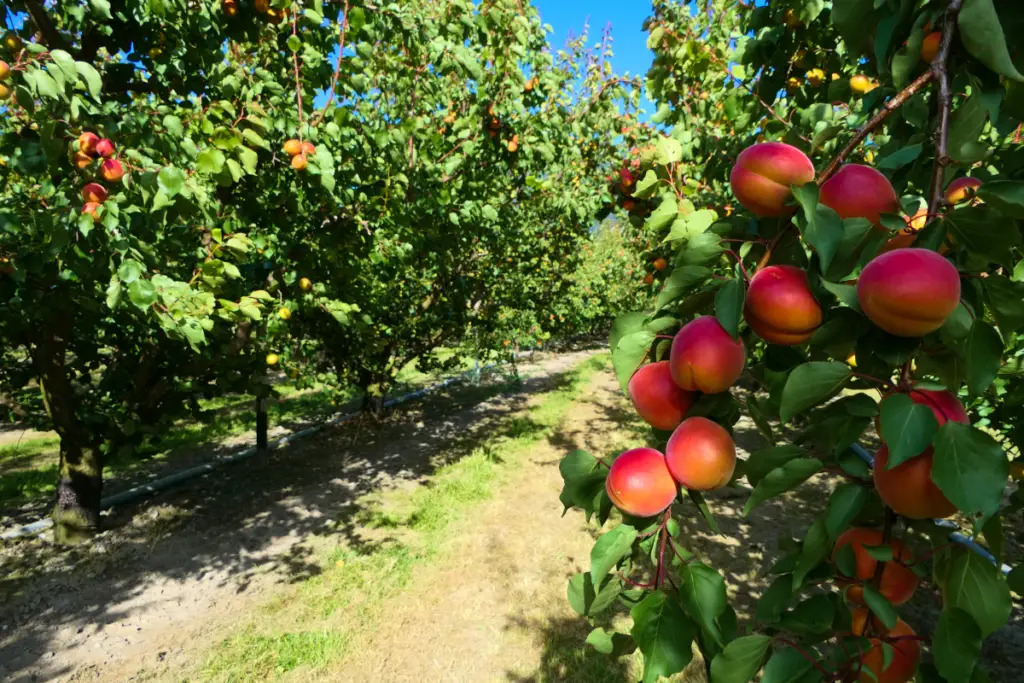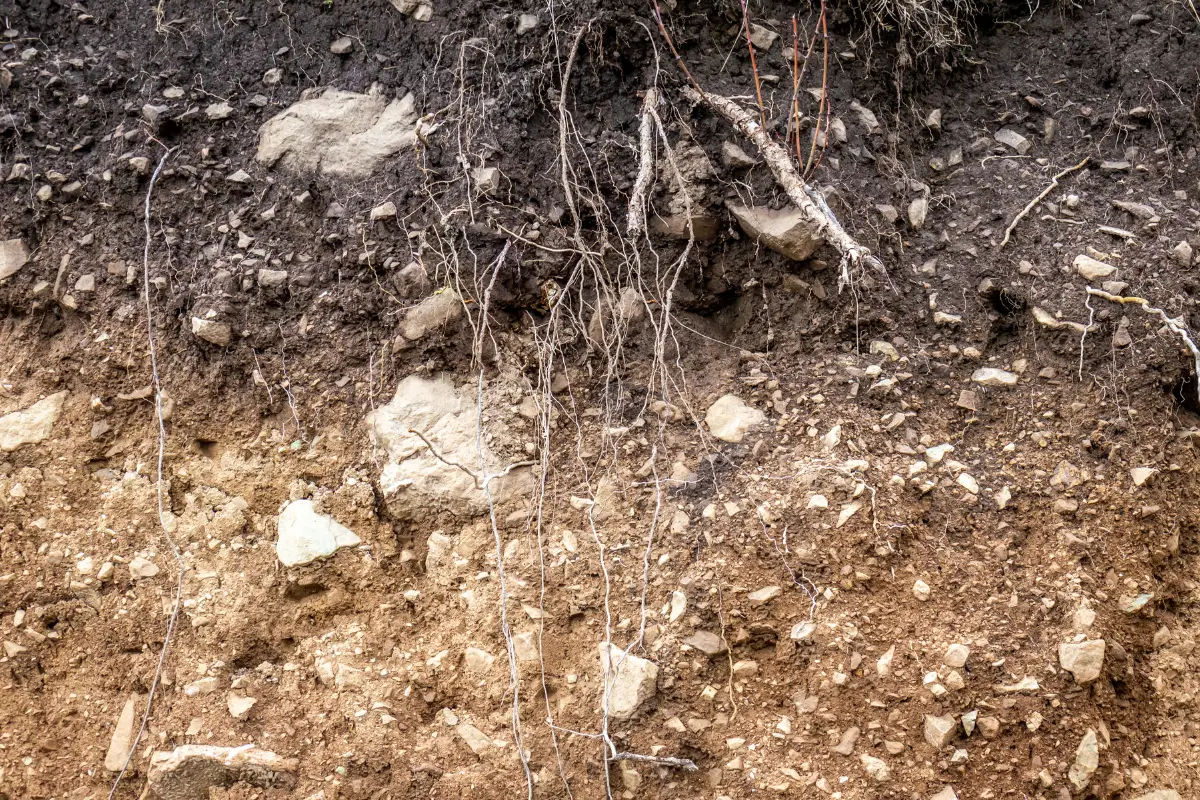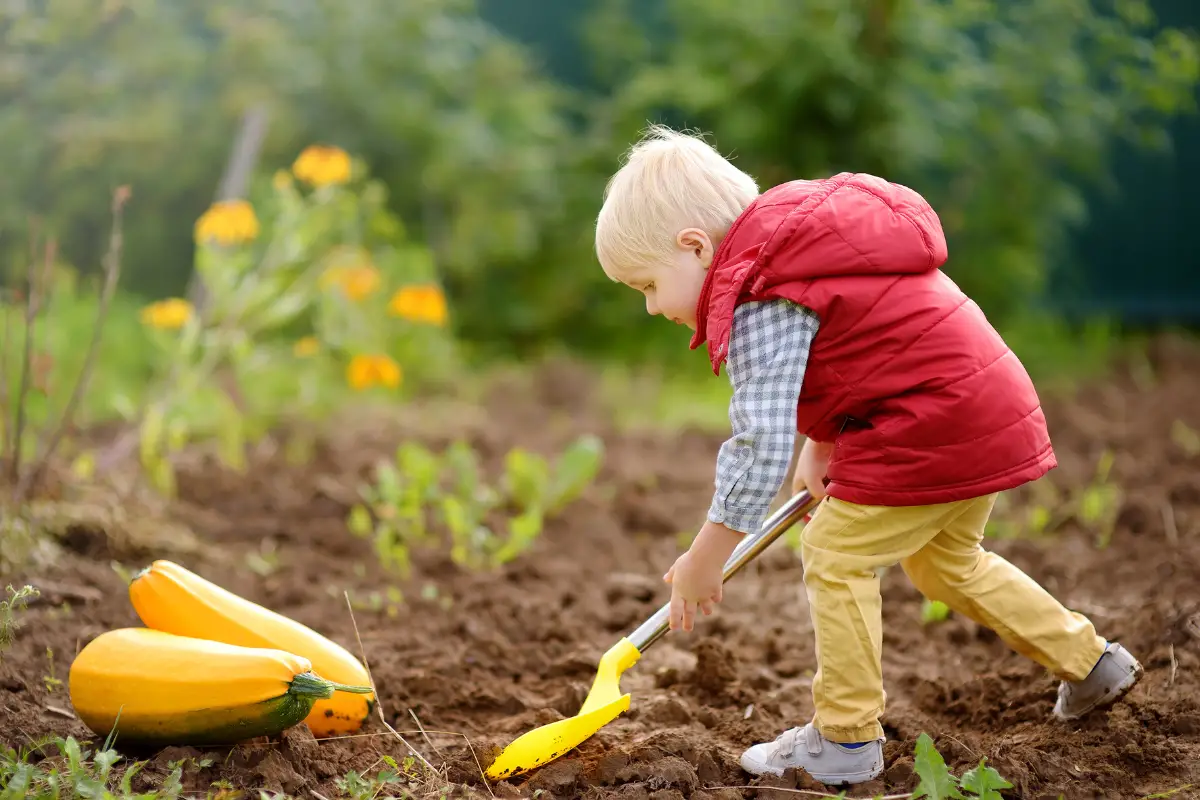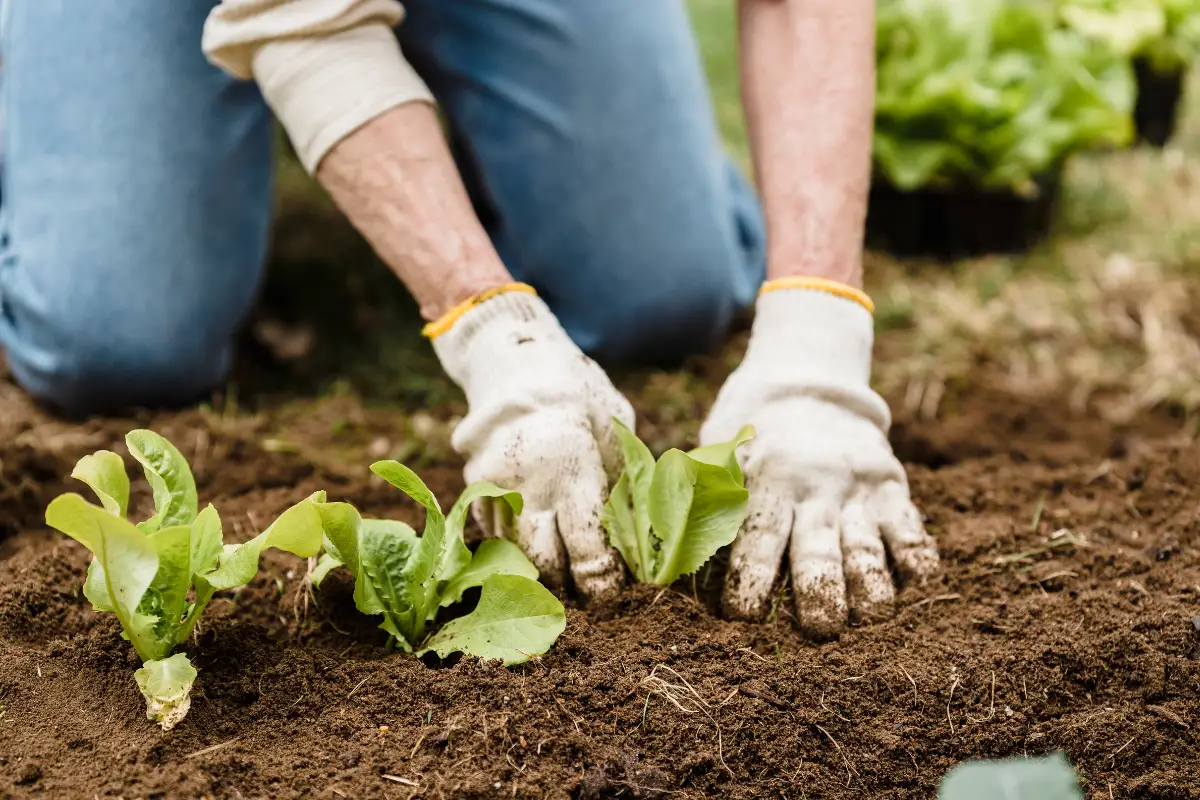Fruit trees are a great addition to any garden or orchard. They provide fresh, delicious produce for you to enjoy and can also add beauty to your landscape. However, not all soil types are suitable for growing fruit trees.
Sandy soil, for example, can be a challenge for many fruit trees because it drains water quickly and doesn’t retain nutrients well. But that doesn’t mean you can’t grow fruit trees in sandy soil.
Some fruit trees are better adapted to sandy soil than others. For instance, jujube is a type of fruit tree that thrives in sandy soil.
This tree is known for its sweet-tasting fruit and can grow up to 20 feet tall. Other fruit trees that can grow in sandy soil include citrus trees, avocado trees, and mango trees.
These trees are native to tropical regions and are well-suited to sandy soil conditions.
If you’re looking to grow fruit trees in sandy soil, it’s important to choose the right type of tree and take proper care of it.
You’ll need to amend the soil with organic matter to improve its water-holding capacity and nutrient content.
You’ll also need to water your trees regularly and fertilize them as needed. With the right care and attention, you can grow healthy, productive fruit trees in sandy soil.

Table of Contents
Understanding Soil Types for Fruit Trees
The type of soil in which fruit trees are planted plays a crucial role in their growth and development.
Sandy soil is one of the soil types that fruit trees can grow in. Understanding soil types is essential when selecting fruit trees to grow in sandy soil.
Characteristics of Sandy Soil
Sandy soil is characterized by its high proportion of sand particles, which make it light, well-draining, and easy to work with.
It warms up quickly in the spring, making it an excellent choice for early-blooming fruit trees.
However, sandy soil can be low in nutrients and organic matter, which can affect the growth and yield of fruit trees.
Advantages of Sandy Soil for Fruit Trees
Despite its low nutrient content, sandy soil has some advantages for growing fruit trees.
These include:
- Good drainage: Sandy soil drains water quickly, preventing waterlogging, which can lead to root rot and other soil-borne diseases.
- Warms up quickly in spring: Sandy soil heats up faster than other soil types, making it ideal for early-blooming fruit trees.
- Easier to work with: Sandy soil is easy to work with and can be amended with organic matter to improve its nutrient content.
Disadvantages of Sandy Soil for Fruit Trees
Sandy soil also has some disadvantages for growing fruit trees.
These include:
- Poor water retention: Sandy soil does not retain water well, which can lead to drought stress in fruit trees.
- Low nutrient content: Sandy soil is low in nutrients and organic matter, which can affect the growth and yield of fruit trees.
- Susceptible to erosion: Sandy soil is prone to erosion, which can lead to soil loss and nutrient depletion.
When selecting fruit trees to grow in sandy soil, it is essential to choose varieties that are well-suited to the soil type.
Some fruit trees that are well-suited to sandy soil include jujube, peach, apricot, and nectarine trees.
It is also important to amend sandy soil with organic matter to improve its nutrient content and water retention.
Fruit Trees That Thrive in Sandy Soil
Sandy soil can be a challenge for growing fruit trees, as it tends to drain quickly and doesn’t retain moisture well. However, there are some fruit trees that can thrive in sandy soil conditions.
Here are some of the best fruit trees that can be grown in sandy soil.
Peach Trees
Peach trees can grow well in sandy soil, as long as the soil is well-draining and has good fertility.
Peach trees require a lot of sunlight and heat to produce fruit, so sandy soil can be ideal for them in hot climates.
Some of the best peach tree varieties for sandy soil include Redhaven, Elberta, and Belle of Georgia.
Fig Trees
Fig trees can also do well in sandy soil, as long as they are planted in a sunny spot with good drainage.
Figs are relatively low-maintenance trees that can tolerate dry conditions, making them a good choice for sandy soil.
Some of the best fig tree varieties for sandy soil include Brown Turkey, Celeste, and Chicago Hardy.
Apple Trees
Apple trees can grow in sandy soil, but they may require some additional care and attention to thrive.
Sandy soil tends to lack the nutrients that apple trees need, so it’s important to fertilize them regularly.
Some of the best apple tree varieties for sandy soil include Honeycrisp, Red Delicious, and Granny Smith.
Pomegranate Trees
Pomegranate trees are well-suited to sandy soil, as they are drought-tolerant and can thrive in hot, dry conditions.
They prefer well-draining soil, so sandy soil can be ideal for them. Some of the best pomegranate tree varieties for sandy soil include Wonderful, Eversweet, and Ambrosia.
Adapting Sandy Soil for Other Fruit Trees
While sandy soil is best suited for fruit trees from tropical regions such as citrus, avocado, and mango, there are ways to adapt sandy soil for other fruit trees.
Here are some tips to help other fruit trees grow in sandy soil:
Amend Soil with Organic Matter
Adding organic matter to sandy soil can help improve its water retention and nutrient-holding capacity.
Compost, aged manure, and leaf mold are great sources of organic matter that can be worked into the soil before planting.
This can help retain moisture in the soil, which is important for the growth of fruit trees.
Irrigation
Since sandy soil drains quickly, it is important to water fruit trees in sandy soil more frequently than those in other types of soil.
Sandy soil requires a deep soak every 10-14 days, while clay soil requires a deep soak every 15-20 days.
In addition, mulching around the base of the tree can help retain moisture in the soil.
Fertilize Regularly
Fruit trees in sandy soil require regular fertilization to ensure they have enough nutrients to grow and produce fruit.
A balanced fertilizer with equal amounts of nitrogen, phosphorus, and potassium can be applied every two to three months during the growing season.
Choose Appropriate Rootstocks
Choosing the right rootstock for fruit trees in sandy soil can also help improve their growth and yield.
Rootstocks that are tolerant of sandy soil include M-111 for apples, Lovell for peaches, and Nemaguard for apricots.
With these tips, it is possible to grow other fruit trees in sandy soil.
However, it is important to keep in mind that sandy soil may not be the best option for all fruit trees and some may require a different type of soil to thrive.
Watering and Fertilizing Techniques for Sandy Soil
When it comes to sandy soil, it is important to understand that it has a low water-holding capacity.
This means that the water drains quickly, and the soil can dry out faster than other types of soil.
Therefore, it is essential to water your fruit trees regularly to ensure they receive enough moisture.
Watering Techniques
To water fruit trees in sandy soil, you need to do it slowly and deeply. This means giving the soil enough time to absorb the water and allowing it to reach the roots.
Shallow watering can lead to the roots staying near the surface, which can make the tree more susceptible to drought and other issues.
One effective watering technique for sandy soil is to use a drip irrigation system. This system delivers water directly to the roots, which reduces water waste and promotes deep root growth.
You can also use a soaker hose, which works similarly to a drip system.
Fertilizing Techniques
Since sandy soil drains quickly, the nutrients in the soil don’t stay around for long. Therefore, it is essential to fertilize your fruit trees regularly to ensure they receive the necessary nutrients.
One option is to use slow-release fertilizers, which slowly release nutrients over time.
Another option is to use organic fertilizers, such as compost or manure. These fertilizers not only provide nutrients but also help improve soil structure and water-holding capacity.
It is important to note that you should not over-fertilize your fruit trees, as this can lead to nutrient burn and other issues.
Common Challenges with Sandy Soil
Sandy soil is a type of soil that is composed of large particles and has a low nutrient content.
While it has its benefits, such as good drainage and aeration, it also poses some challenges for fruit tree growers.
Here are some common challenges that come with growing fruit trees in sandy soil:
Low Nutrient Content
One of the biggest challenges of sandy soil is its low nutrient content.
Sandy soil does not hold onto nutrients very well, which means that fruit trees growing in this type of soil may not have access to the nutrients they need to grow and produce fruit.
This can lead to stunted growth, poor fruit quality, and lower yields.
To address this challenge, fruit tree growers may need to amend the soil with organic matter, such as compost or manure.
Adding organic matter to the soil can help improve its nutrient content and fertility, which can lead to healthier trees and better fruit production.
Poor Water Retention
Another challenge of sandy soil is its poor water retention. Sandy soil drains quickly, which means that fruit trees growing in this type of soil may not have access to enough water to meet their needs.
This can lead to drought stress, wilting, and even death.
To address this challenge, fruit tree growers may need to water their trees more frequently or use irrigation systems to ensure that they are getting enough water.
They may also need to mulch around the base of the tree to help retain moisture in the soil.
Increased Acidity
Sandy soil is naturally acidic, which can be a challenge for some fruit trees. While some fruit trees, such as citrus and mango, prefer acidic soil, others may struggle to grow in such conditions.
Increased acidity can also lead to nutrient deficiencies and poor fruit quality.
To address this challenge, fruit tree growers may need to adjust the soil pH by adding lime or other soil amendments.
They may also need to monitor the soil pH regularly to ensure that it remains within the optimal range for their fruit trees.
Conclusion
In conclusion, it is possible to grow fruit trees in sandy soil, but it requires careful consideration of the specific tree’s needs.
While sandy soil can be beneficial for some fruit trees, too much sand can cause excessive drainage and leaching of nutrients, leading to stunted growth and poor fruit production.
The best soil for fruit trees is a mix of sand, clay, and silt.
Some fruit trees benefit significantly from sand, such as blueberries, cherries, citrus, dragon fruit, melons, persimmons, plums, and pomegranates. Sand generally makes the soil more acidic and permeable.
It is important to note that not all fruit trees will thrive in sandy soil. Some fruit trees, such as apples and pears, prefer loamy or clay soils with good drainage.
When selecting fruit trees for sandy soil, it is important to consider the specific needs of the tree and choose a variety that is well-suited to sandy soil conditions.
- How to Dry Basil Leaves: A Professional Guide
- Is an Avocado a Fruit or Vegetable? Simple Answer and Explanation
- Does Pineapple Have Seeds? Exploring the Anatomy of Pineapples
- Blooming Through Winter: Can I Grow Vegetables Indoors in the Winter?
- What Can You Grow in a Greenhouse All Year Round: A Guide to Year-Round Greenhouse Gardening
- Are Blueberries Blue? Debunking the Myth of Their Color
















